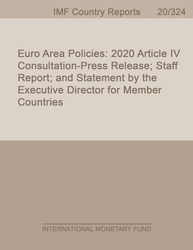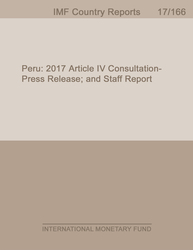
Euro Area Policies:2020 Consultation on Common Euro Area Policies-Press Release; Staff Report; and Statement by the Executive Director for Member Countries
2020 Consultation on Common Euro Area Policies-Press Release; Staff Report; and Statement by the Executive Director for Member Countries
READ MORE...
Volume/Issue:
Volume 2020
Issue 324
Publication date: December 2020
ISBN: 9781513565668
$18.00
Add to Cart by clicking price of the language and format you'd like to purchase
Available Languages and Formats
| English |
Prices in red indicate formats that are not yet available but are forthcoming.
Topics covered in this book
This title contains information about the following subjects.
Click on a subject if you would like to see other titles with the same subjects.
Inflation , Economics- Macroeconomics , Money and Monetary Policy , Public Finance , ISCR , CR , EU leader , recovery package , EU emission reduction goal , EU budget , increase private
Also of interest
Summary
The COVID-19 pandemic has led to severe socio-economic dislocations and hardship. Supported by an unprecedented policy response and by the easing of lockdown measures as the infection rate moderated, the euro area economy initially recovered strongly from the pandemic’s first wave. However, a large second wave and reimposition of containment measures suggest much slower growth momentum in the near term. The outlook is for a subdued economic recovery and low inflation, with a significant permanent output loss relative to the pre-crisis trajectory. Uncertainty remains extremely high, mainly due to different pandemic scenarios, including regarding the availability and effectiveness of potential vaccines and therapies and behavioral changes. Output growth is expected to be much lower through 2021Q1 than projected in 2020 October World Economic Outlook (WEO) but may rebound beyond then in light of recent promising news on vaccine development. The key policy challenge is to continue countering the pandemic while facilitating a robust and inclusive recovery, including by addressing the health crisis, containing economic scarring, supporting resource reallocation and transformation to greener and more digital economies, and limiting the crisis’s impact on inequality and poverty. In a downside scenario, sizable further stimulus would be needed.
Copyright © 2010 - 2024
Powered by:
AIDC



